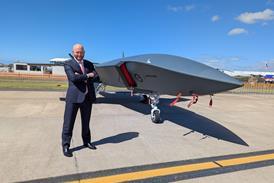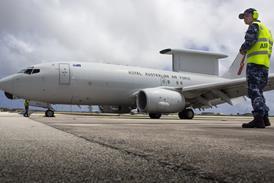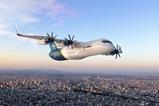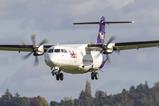Fokker Next Gen is contemplating the conversion of a Boeing 777 into a temporary flying testbed for multiple future technologies as part of a consortium linked to the EU’s Clean Aviation programme.
A successor to the legacy Dutch airframer, Hoofddorp-based Fokker Next Gen is planning to develop a clean-sheet 120-150-seat aircraft powered by hydrogen-combustion engines for service entry in around 2035.

As part of that ambition it is a member of Clean Aviation and is also a partner in a Rolls-Royce-led project called CAVENDISH to mature the technologies around hydrogen combustion.
At the outset, its role in CAVENDISH was to work on the technical and regulatory aspects of integrating a modified Rolls-Royce Pearl 15 business jet engine, fueled by liquid hydrogen, onto a Fokker 100 regional jet. Flight tests were foreseen in Clean Aviation’s second phase.
That supported Fokker Next Gen’s strategy of converting the F100 as a stepping to a clean-sheet aircraft. However, earlier this year it revealed a change in course, ditching the conversion plan on cost and complexity grounds.
Juriaan Kellermann, Fokker Next Gen chief executive, says that with the shift in emphasis CAVENDISH and the company need to find another testbed.
“Our former role was to perform a study to modify an F100 to take a Pearl engine to fly on hydrogen,” he says.
But now the “aircraft we will use as a testbed will probably be modified by another company under our supervision”.
One idea, he says, “is to take a 777 from the desert and modify it, fly it, take everything off and then put it back into storage”.
That will be necessary due to the rules around EU-funded projects, he says.
Although Rolls-Royce has its own 747-200 testbed, that is likely to be busy with the manufacturer’s own engines, not least that the company recently revealed an ambition to take its UltraFan powerplant to flight.
While there are other options, Kellermann thinks “building some kind of consortium” will benefit those in the supply chain who have technologies to test but lack the deep pockets of the industry’s primes.
Fokker Next Gen intends to submit the proposal as part of Clean Aviation’s second phase which will run from 2026 onwards; early scoping work for the project is now under way.
Similarly, the F100 conversion was bieng supported by €25 million ($26.8 million) in funding from the Dutch government’s Luchtvaart in Transitie green aviation programme. Kellermann says it has submited a change request to pivot the project to focus on the fuel system’s digital twin.
Meanwhile, Fokker Next Gen will by year-end have reached two milestones: completing a digital twin of its proposed fuel storage system, and setting up an airline advisory board to “act as a sounding board” and help shape the future clean-sheet aircraft.
More details should be available in the autumn, he says, although it will include Latvian carrier Air Baltic which in May disclosed a collaboration agreement with the developer.
Fokker Next Gen plans to build its aircraft on production lines in the Netherlands and Latvia.































